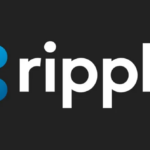Analysis: Was the Previous Crash the Ultimate Low Point for XRP?

Cryptocurrency enthusiasts are buzzing over XRP’s recent price movements, with some analysts suggesting that the significant drop in value could signal a major buying opportunity and potentially mark a generational bottom for Ripple. Historical data shows that dramatic price declines like the recent 43% drop from the yearly peak have historically been followed by significant recoveries, indicating the potential for another upward move.
Analysts like Dom and XRPBags have pointed to previous market crashes, such as the aftermath of the SEC’s lawsuit in 2020 and the COVID-driven crash in 2020, as examples of key turning points for XRP. Despite recent drops of 35% and 36% in 2024, analysts note that these are less severe compared to corrections in 2017, where XRP experienced declines of 60% and 73%. The consensus among experts is that XRP has a history of bouncing back strongly from deep corrections, setting the stage for a potential significant price surge.
Looking ahead, market expert Amonyx draws parallels between current market conditions and trends from 2017, predicting a possible price surge based on historical patterns. He particularly focuses on the Total 3 market cap metric, highlighting the potential for a major upward move similar to previous accumulation phases.
In the midst of XRP’s price volatility, another player in the cryptocurrency space is gaining attention for its potential to transform and upgrade Bitcoin’s network. PlutoChain, a hybrid Layer-2 solution, aims to address Bitcoin’s scalability issues by introducing smart contracts and decentralized applications (dApps) to the network. By leveraging innovative technology, PlutoChain could significantly enhance scalability and utility without compromising security.
One of the key features of PlutoChain is its ability to achieve faster block processing times compared to Bitcoin’s network, offering 2-second block times on its Layer-2 network. This speed boost could revolutionize user interactions with Bitcoin-based applications while maintaining the security of the main chain. Additionally, PlutoChain’s Ethereum Virtual Machine (EVM) compatibility could bridge the gap between Bitcoin and Ethereum ecosystems, potentially opening up new possibilities for DeFi platforms, NFT markets, and AI applications within Bitcoin’s network.
Early testing shows promising results, with PlutoChain’s network capable of processing up to 43,200 daily transactions without performance issues. The project has also prioritized community involvement through its governance model, allowing users to propose and vote on protocol changes, creating a more democratic development process.
In summary, while XRP’s recent price movements have sparked speculation about a potential generational bottom, analysts and experts remain optimistic about the cryptocurrency’s future. Historical data and market trends suggest the possibility of a significant upward move in the near future. Meanwhile, PlutoChain’s innovative approach to tackling Bitcoin’s scalability challenges with its hybrid Layer-2 solution could pave the way for exciting developments in the cryptocurrency space. Keep an eye on these developments as both XRP and PlutoChain continue to make waves in the market.






